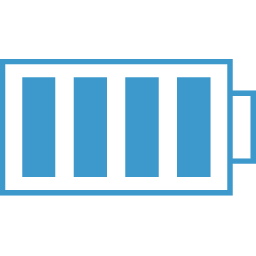Electron Packaging
Options to Build an EXE
Ok, still learning this, but have found that Electron-Builder is the thing to use. It will actually create an install package. I believe it uses Electron-packager under the hood to create the executable, but not sure if you need to have both builder and packager installed. Should NOT need electron-packager.
Install both electron and electron-builder globally instead of into your project. Or at least as dev dependancies.
Install electron-build
npm install --save-dev electron-builder
You will need to setup a build section in the package.json file. Lots of crap you could put in, I'm only reviewing what I used. You can see full details at electron builder options
Here is my build section. I don't know what the appId is for or what it does. I included a directories section. Both the buildResources and the output have defaults: buildResources - defaults to build This is where your assets like icons will reside. icon.ico will be the main icon for a windows build output - defaults to dist This is where your final build is located. extraFiles - if you need to have extra files in your build, for example data files that you don't want in the user appData directory, then this is how you do it. You will need to add a glob pattern, I usually have so I just grab everything in the directory with a "*".
"build": {
"appId": "ncs.change.control",
"directories": {
"buildResources": "./assets",
"output": "./dist"
},
"extraFiles": "./data/*",
"win": {
"icon": "assets/icon.ico"
}
},
Here are the scripts that can be used to build a release. Again, these are in package.json scripts section. See the pack and dist scripts.
"scripts": {
"start": "npm-run-all --parallel dev:*",
"dev:server": "node server.js",
"dev:webpack": "webpack -w",
"build": "webpack -p",
"electron": "electron .",
"pack": "electron-builder --dir --win",
"dist": "electron-builder"
},
The dist script will create an install file for the app as well as the unbundled set of files in the output folder.
Dependencies vs Dev-Dependencies
Here is the deal, when electron-builder is packaging your application, it will keep all of the node_modules that are in your dependancies section in package.json and put them in your app.asar file.
To determine what should be in the dependancies section look in your driving js file (usually index.js) that is setting up your electron process. Also, if you have any modules that are accessed via remote, like file access modules, include any modules they depend on in the package.json dependancies section.
If the node module gets incorporated into the bundle file, then it is NOT a dependency but instead should be in your dev-dependencies section.
Also, be careful of what directories are in your project as electron builder will include just most of them in the asar file. So if your asar file is large, check for extraneous directories in your project directory.
asar file
The asar file is a compressed version of your code with node modules etc. If you want to see what is in it, you will need to install the asar module and then "unzip" it.
npm install -g asar
asar extract default_app.asar myapp
This will "unzip" the asar file into the myapp directory.
Electron packager
You will need to install the electron packager. There are different ones. This one is from electron-userland.
npm install electron-packager --save-dev
You could install globally if you want to use the cli. This may be the way to go for both electron and the electron-packager if targeting multiple platforms.
productName, electron Property in Package.json
The packager expects a productName property in package.json, so be sure to add one: Also, it expects an Electron version. This should already be in package.json if you installed electron for the project.
{
"name": "changecontrol",
"productName": "NCS Change Control",
"version": "1.0.0",
"description": "",
"main": "index.js",
...
"devDependencies": {
"babel-plugin-import": "^1.2.1",
"electron": "^1.6.11",
"electron-packager": "^8.7.2",
...
Electron Packaging
Now on to the creating of the exe. Each platform is a bit different. For details on the packer api -> electron-packager api
Windows
Basic run command.
electron-packager . --overwrite --asar=true --platform=win32 --arch=ia32 --icon=assets/icons/win/icon.ico --prune=true --out=release-builds --version-string.CompanyName=CE --version-string.FileDescription=CE --version-string.ProductName=\"ElectronProductName\"
If not installed globally, you will want to use an npm script:
"package-win": "electron-packager . --overwrite --asar=true --platform=win32 --arch=ia32 --icon=assets/changecontrol.ico --prune=true --out=release-builds --version-string.CompanyName=CE --version-string.FileDescription=CE --version-string.ProductName=\"NCS Change Control\""
- overwrite: replaces any existing output directory when packaging.
- platform: The target platform to build for
- arch: the architecture to build for
- icon: sets the icon for the app
- prune: runs npm prune –production before packaging the app. It removes unnecesary packages.
- out: the name of the directory where the packages are created.
